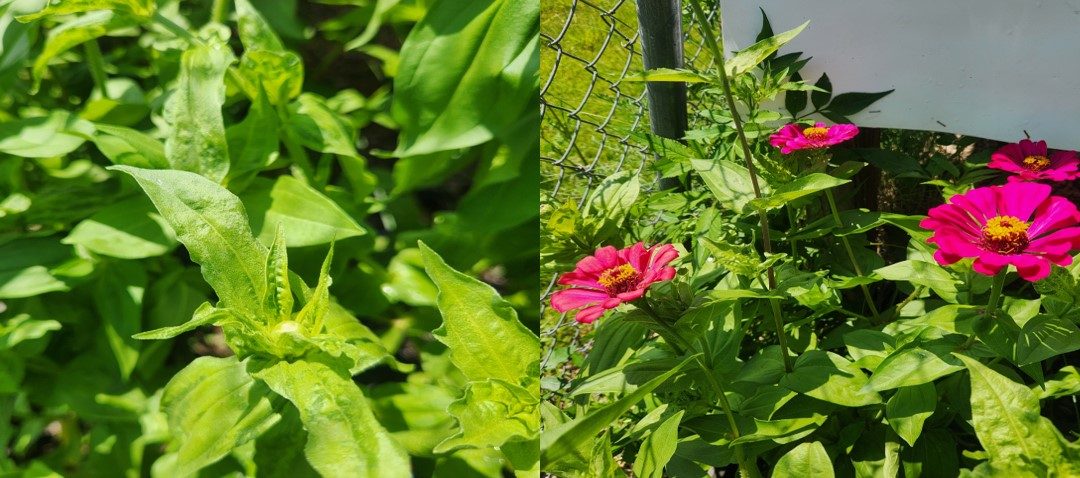
by Donna Arnold | Jul 6, 2025
Zinnia Woes: What’s Causing Terminal Shoot Curling?
On a quiet stroll to the greenhouse early Monday morning, something unusual caught my eye—our zinnia plants looked noticeably different. Their vibrant green shoots had begun to curl at the tips, a subtle but clear sign that all was not well. Do not be alarmed if your zinnias are showing similar symptoms—it is a common issue. Curling at the terminal shoots is often a plant’s way of signaling stress. Whether it is due to environmental factors, pest activity, or nutrient imbalance, these twisted tips are clues worth investigating. Understanding the “why” behind the curl is the first step toward helping your zinnias return to their radiant, blooming selves
Common Culprits Behind Curling Zinnias
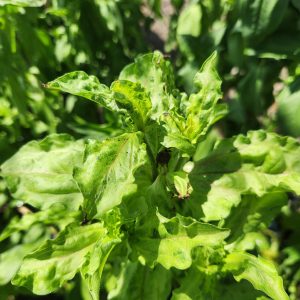
Environmental Stress: Zinnias are sun-lovers, but extreme heat, strong winds, or sudden temperature swings can cause their terminal shoot to curl as a defense mechanism.
Watering Woes: Both overwatering and underwatering can lead to leaf curls. Too much water suffocates roots, while too little causes drought stress—either way, the plant reacts by curling its leaves.
Pests: Aphids, thrips, and spider mites are notorious for feeding on tender new growth. Their sap-sucking habits distort leaves and can transmit viruses.
Diseases: Fungal infections like powdery mildew or bacterial leaf spot can cause curling, especially when combined with poor air circulation.
Nutrient Deficiencies: A lack of nitrogen, magnesium, or manganese can lead to curling and yellowing of new growth. Soil testing can help pinpoint the issue.
What You Can Do:
- Ensure consistent watering—moist but not soggy soil is ideal.
- Inspect regularly for pests and treat with neem oil or insecticidal soap.
- Improve air circulation by spacing plants properly and pruning overcrowded areas.
- Feed with a balanced fertilizer and consider a soil test if symptoms persist.
- Remove and destroy severely affected plants to protect the rest of your garden.
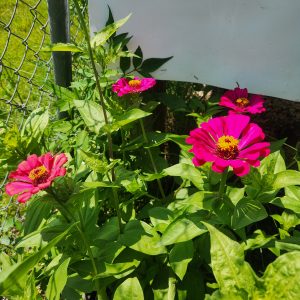
Healthy zinnias reward you with bold, cheerful blooms. A little detective work now can keep your garden dazzling all season long. For more information on Zinnias, contact your local Extension office or follow the links below.
https://gardeningsolutions.ifas.ufl.edu/plants/ornamentals/zinnia/
https://edis.ifas.ufl.edu/publication/FP623
https://nwdistrict.ifas.ufl.edu/hort/category/annuals-2/page/2/#:~:text=When%20planting%20zinnias%2C%20it’s%20recommended,than%20the%20foliage%20whenever%20possible.
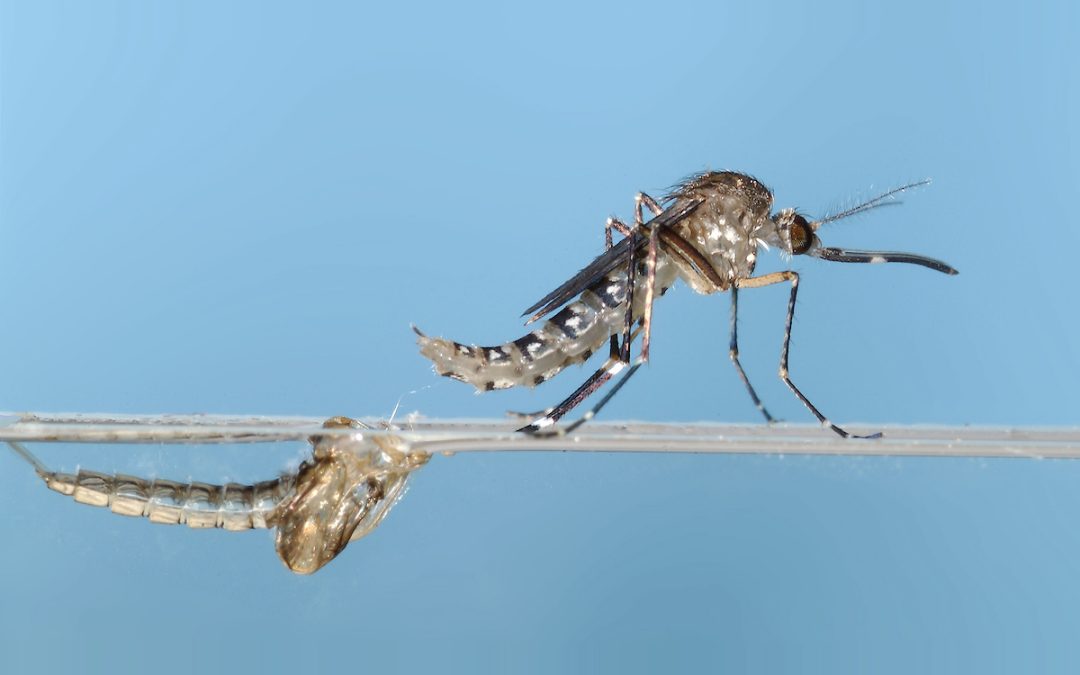
by Julie McConnell | Jun 26, 2025
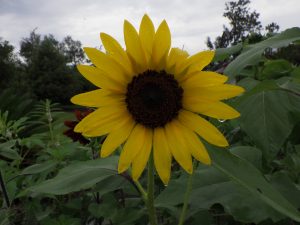
Sunflower after the rain. Photo: J. McConnell, UF/IFAS
Summer showers are finally giving gardens relief, but in addition to happy flowers, mosquitoes are also benefitting from the rainfall. Mosquitoes are not only a nuisance, but they can also transmit diseases and parasites to people, pets, and livestock so managing them on your property is a matter of public health!
The knee-jerk reaction to mosquitoes is to try to kill the blood-sucking flying fiends, but targeting this life stage will not solve the mosquito problem. Instead, focus your efforts on breaking up the breeding cycle to reduce the population. Less ideal breeding sites equals less larvae (juvenile mosquitoes) and pupae which equals less biting adults!
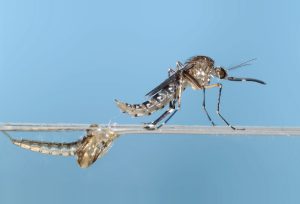
A female black salt marsh mosquito emerges from submerged pupal skin. UF/IFAS File Photo
In addition to being more effective than targeting adults that can fly away or avoid insecticides, most of your breeding site reduction methods are free or low cost; the biggest investment is your time! Step one is to recognize potential breeding sites on your property. Most people recognize that a stack of tires, buckets full of water, or even that decorative bird bath are potential breeding sites but there are also less obvious ones. A covered grill that has an indention that holds a few tablespoons of water, boats or kayaks, children’s toys, gutters that have accumulated leaves or other debris, the saucer under your container plant, or the leaf axils of bromeliad plants are all potential breeding sites.
So, what do you do about this? When practical dump or drain out the water every 3-4 days and wipe down any vertical surfaces of containers where mosquito eggs could be laid. If you are unable to drain or dump, consider treating the water with Bti (Bacillus thuriengiensis israelensis) which is a targeted biological control that only affects mosquitoes, black flies, and fungus gnats. Bti is a naturally occurring bacteria that impacts the digestive system of a few select species in the order Diptera (flies). It is not toxic to people, pets, or wildlife and depending on the formulation can last several weeks before reapplication is necessary. Commonly sold as “mosquito dunks” or “mosquito bits” this insecticide is sold at garden centers and home improvement stores and is relatively inexpensive. As with any pesticide, follow all instructions on the label.
Want to know more about these topics? Visit the references listed below:
Florida Resident Guide to Mosquito Control
CDC Mosquito Control: What you need to know about Bti
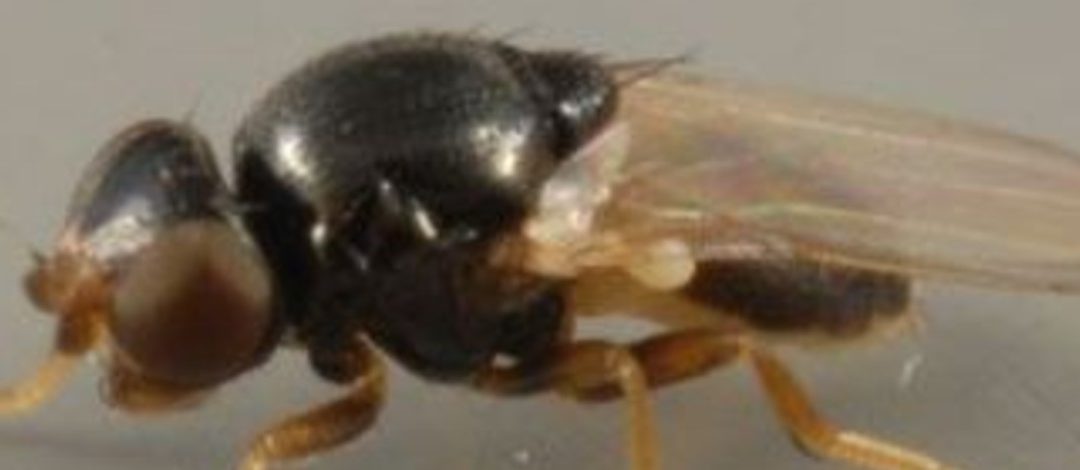
by Larry Williams | Jun 26, 2025
If you’ve been outside this spring, you’ve probably been bothered by gnats. These tiny flies relentlessly congregate near the face getting into the eyes, nose, mouth and ears.
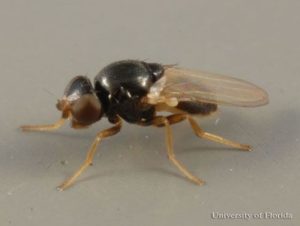
Eye gnat. Credit: Lyle Buss, UF/IFAS
Eye gnats come right up to the faces of people and animals because they feed on fluids secreted by the eyes, nose and ears. Even though eye gnats are considered mostly a nuisance, they have been connected to transmission of diseases such as pink eye.
Eye gnats are true flies. At about one-sixteenth of an inch in length, they are among the smallest fly species in Florida. They are known as eye gnats, eye flies, frit flies and grass flies. The name grass flies is somewhat descriptive as open grass areas such as pastures, hay fields, roadsides and lawns provide breeding sites for these gnats. They also breed in areas of freshly disturbed soil with adequate organic matter such as livestock farms.
Even though these gnats can be found in much of North and South America, they prefer areas with warm, wet weather and sandy soils. Sounds like Florida.
An early spring and plenty of rain are the more likely reasons why these gnats are such a problem in our area this year. Without having the typical last killing frost around mid-March and with early warm weather and rains, the gnats got off to an early start.
Short of constantly swatting them away from your face or just not going outdoors, what can be done about these irritating little flies? I grew up in an area of Georgia where gnats are common. I’ll let you in on a secret, folks who live in Georgia are known to be overly friendly because they are always waving at people who are just passing through. More than likely, these “friendly” folks are busy swatting at gnats, not waving at others who happen to be driving by. Swatting is a quick swinging action with hand as if waving.
Because of their lifecycle, extremely high reproductive numbers in the soil and because insecticides breakdown quickly, area-wide chemical control efforts don’t work well in combating this insect.
The use of the following where gnats are common can be helpful.
- Correct use of insect repellents, particularly those containing DEET
- Screens on windows to prevent the entry of gnats into homes
- Face-hugging sunglasses or other protective eyewear
- Face masks
We may have to put up with these annoying gnats until cold weather arrives and be thankful that they don’t bite.
Additional info on eye gnats is available online at https://edis.ifas.ufl.edu/in884 or from the UF/IFAS Extension Office in your County.
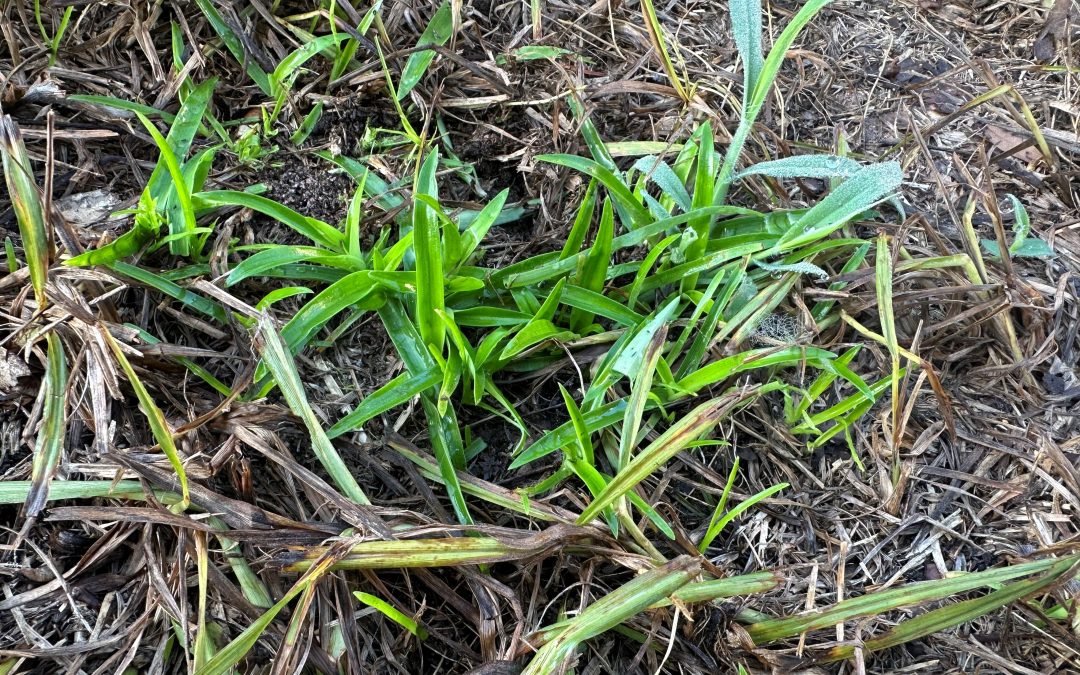
by Daniel J. Leonard | Jun 5, 2025
The Panhandle’s dreaded summer heat has finally arrived in force and has brought with it one of the most difficult to control lawn/landscape weeds, our annual enemy Doveweed (Murdannia nudiflora). Doveweed is characterized as one of the world’s worst weeds due to its broad range of growing conditions, ability to root along its stems, forming mats as it grows, massive seed production (each plant can produce up to 2,000 seeds per year), and inconspicuous nature – it looks like a grass to the untrained eye. So, what can gardeners do to control Doveweed that’s already up this year and prevent it next summer? Let’s find out.
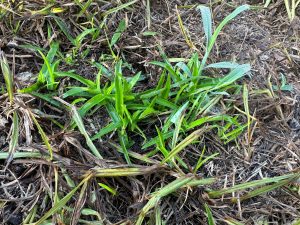
Doveweed emerging in a bare patch of a Centipedegrass lawn in late May 2025. Photo courtesy of Daniel Leonard.
First, the best prevention for all weeds, Doveweed included, is a healthy lawn/landscape. Ensuring healthy, thick Centipedegrass turf and landscaped beds that don’t allow light to hit bare soil goes a long way towards reducing the overall weed load lawns and landscapes can experience. For lawns, this can be achieved through mowing regularly at the proper height for your turfgrass (2.5” or so for Centipedegrass), irrigating no more than 0.75”-1” per week in the absence of rain, limiting stress from overfertilization, and removing excess thatch. In landscapes, preventative weed control focuses on limiting overwatering/fertilization and maintaining a 2-3” organic mulch layer of pinestraw, pine bark, leaves, wood chips, etc. Adopting these practices can greatly reduce the occurrence of weeds in your yard, however they will not eliminate weeds altogether and supplemental chemical weed control is often necessary.
Unlike Crabgrass, Florida Pusley, and other commonly encountered Panhandle annual weeds that emerge when the soil begins to warm in early spring (usually late February-March), Doveweed waits until mid-April-May (soil temperatures of 70-80 degrees F). All these annual weeds are best controlled by preemergent herbicides, like Indaziflam (Specticle G), before seeds germinate. For Doveweed, that means the first preemergent application should occur mid-April with a follow-up application 6-8 weeks later. However, for this year that opportunity is behind us and our only option is post emergent herbicides.
Which postemergent herbicide you choose depends on if your Doveweed issue is in turfgrass or in landscaped beds. In landscaped beds, the primary control option is either hand pulling or spot treating Doveweed with a 41% glyphosate product (Roundup and other generic products) at a rate of 3% (3-4oz glyphosate/gal). As glyphosate is a non-selective herbicide, be sure to not get any overspray on any ornamental plant foliage. In turfgrass, Doveweed control becomes a little more difficult. You essentially have three options – atrazine, a generic 3-way broadleaf product, or a commercial grade broadleaf product. Though it provides very good control of Doveweed and has pre-emergent properties to help discourage future weeds, I don’t prefer atrazine because it has a high potential to leach into groundwater following heavy rains in sandy soils, which describes much of the Panhandle. The generic 3-way products (usually a mix of Dicamba, Mecoprop, and 2,4-D) are fairly effective on Doveweed, however follow-up applications are usually required and the 2-4D component can be harsh on Centipedegrass at the higher label rates required for Doveweed control. Though somewhat expensive, the best post emergent option for most people is probably a commercial grade product like Celsius WG. Celsius WG is a very strong post emergent broadleaf herbicide that is very effective on Doveweed and is also very safe on Centipedegrass, even in hot weather. If the cost of the product (>$100) is off-putting, it is helpful to remember that even at the highest labelled rate, a 10 oz Celsius WG bottle goes a long way, enough to cover several acres of lawn.
* Regardless of what method you choose, be sure to get after emerged Doveweed seedlings early, before they mature and begin flowering – even the strongest post emergent herbicides work better on young weeds.
While Doveweed is a nasty little plant that is perfectly capable of taking over a lawn or landscaped bed, there are a variety of preventative and control options available. Using a combination of the above techniques should help achieve lasting Doveweed controls in future seasons! For more information about Doveweed and other summer annual weed control in lawns and landscapes, contact your local UF/IFAS Extension County office.
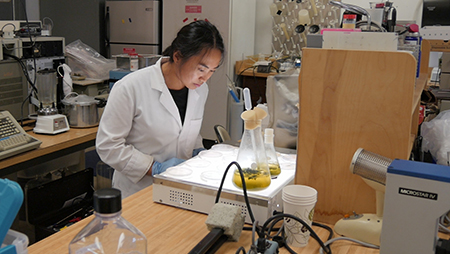
by Mark Tancig | May 28, 2025
Extension Agents get used to hearing that the local Extension Office is the community’s best kept secret. As much as we try to let folks know we’re here, many are still unaware of the services we provide. Even amongst the residents that are familiar with us, some of the services available remain unknown, especially our identification and diagnostic services. Here’s a rundown on some of the services available through your UF/IFAS Extension service.
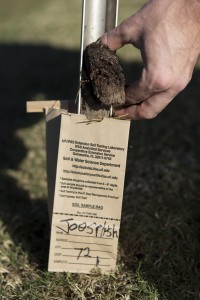
Taking a soil sample. UF/IFAS Photo by Tyler Jones
Soil Testing
This is probably our most well-known service, but it’s worth a reminder. For only $3 (pH only) or $10 (pH plus plant macro- and micro-nutrient values) per sample, plus shipping, you can have your soil analyzed in a state-of-the-art facility. To be clear, soil testing only provides a reading of your soil’s chemistry, specifically pH (acidity/alkalinity) and plant nutrient values. It does not provide information on any diseases or potential toxins that may be present in the soil. In addition to the results, you can specify the general type of plant you’re trying to grow (various grass species, vegetables, citrus, general trees and shrubs, etc.) and the report will provide recommendations to adjust the nutrient levels to be sure that plant is able to thrive. Your local agent receives a copy to help answer any questions you may have about the results or recommendations. More about soil and nutrient testing can be found at the Extension Analytical Services Laboratory website.
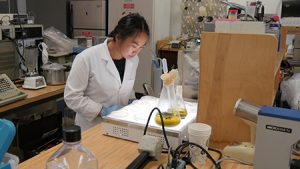
Experts at the Plant Disease Diagnostic Clinic can identify diseases present. Credit: UF/IFAS.
Plant Disease Diagnosis
UF/IFAS Extension has a great plant pathology lab on campus, but we also have a great resource close by in Gadsden County at the North Florida Research and Education Center’s (NFREC) Plant Disease Diagnostic Clinic. For a modest fee of $30, you can submit a sample of a diseased plant, and the lab manager will use the available methods to confirm the presence of disease and identify the disease-causing organism. Just like with the soil test results, you are provided with a recommendation on how to best treat the disease. The NFREC Plant Disease Diagnostic Clinic website has submittal forms, contact information, and directions for collecting a quality sample.
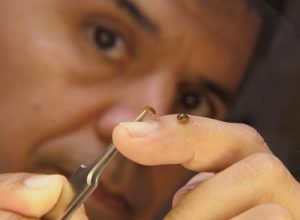
Need help with insect id? The DDIS system can help. Credit: UF/IFAS.
Plant and Insect Identification
While your local extension agent enjoys receiving plant and insect identification, there is an online submittal option available to use as well through our Distance Diagnostic Identification System (DDIS). You can set up an account and then upload photos of plants, insects, mushrooms, even diseased plants, and an expert on UF’s campus will do their best to identify it for you. The DDIS website has more information to help you set up a user account.
The Florida Cooperative Extension Service has many ways to help Florida citizens diagnose their landscape issues using science-based methods conducted by experts in state-of-the-art facilities. The above services are just a selection of the diagnostic capabilities available. To see a complete list, visit the IFAS Diagnostic Services website. You can always contact your local extension office, too, for assistance in identifying plants and insects, as well as diagnosing diseases.














